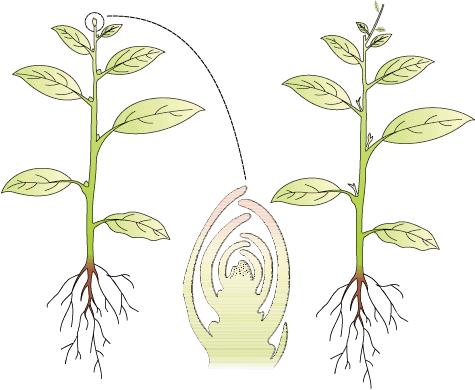31 Years NEET Previous Year Questions: Plant Growth & Development - 1 - NEET MCQ
23 Questions MCQ Test Biology Class 11 - 31 Years NEET Previous Year Questions: Plant Growth & Development - 1
Spraying sugarcane crop with which of the following plant growth regulators, increases the length of stem, thus, increasing the yield? (NEET 2024)
Formation of interfascicular cambium from fully developed parenchyma cells is an example for (NEET 2024)
| 1 Crore+ students have signed up on EduRev. Have you? Download the App |
Auxin is used by gardeners to prepare weed-free lawns. But no damage is caused to grass as auxin (NEEET 2024)
Which hormone promotes internode/petiole elongation in deep water rice? (NEET 2023)
Spraying of which of the following phytohormone on juvenile conifers helps hastening the maturity period, that leads early seed production? (NEET 2023)
Which one of the following plants does not show plasticity? (NEET 2022 Phase 1)
The gaseous plant growth regulator is used in plants to: (NEET 2022 Phase 1)
Production of Cucumber has increased manifold in recent years. Application of which of the following phytohormones has resulted in this increased yield as the hormone is known to produce female flowers in the plants: (NEET 2022 Phase 1)
The ability of plants to follow different pathways in response to environment leading to formation of different kinds of structures is called (NEET 2022 Phase 2)
Which of the following growth regulators is an adenine derivative? (NEET 2022 Phase 2)
The plant hormone used to destroy weeds in a field is: [2021]
It takes very long time for pineapple plants to produce flowers. Which combination of hormones can be applied to artificially induce flowering in pineapple plants throughout the year to increase yield? [2019]
The pineapple which under natural conditions is difficult to blossom has been made to produce fruits throughout the year by application of [NEET Kar. 2013]
During seed germination its stored food is mobilized [NEET 2013]
Which one of the following generally acts as an antagonist to gibberellins? [2012M]
Phototropic curvature is the result of uneven distribution of: [2010]
Which one of the following acids is a derivative of carotenoids ? [2009]
One of the synthetic auxin is: [2009]
Senescence as an active developmental cellular process in the growth and functioning of a flowering plant, is indicated in [2008]
“Foolish seedling’’ disease of rice led to the discovery of [2007]
Which one of the following pairs, is not correctly matched? [2007]
Cell elongation in internodal regions of the green plants takes place due to [2004]
Differentiation of shoot is controlled by [2003]
|
181 videos|362 docs|148 tests
|


















